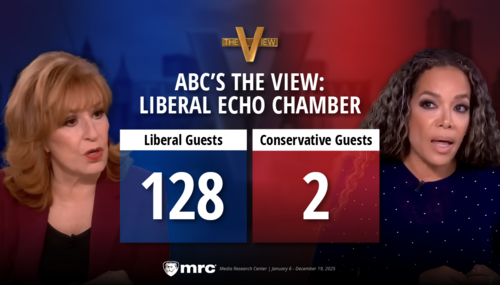Apparently desperate to claim that 17 percent government shutdown is causing pain, Christopher Rugaber at the Associated Press, aka the Adminstration's Press, decided that the Empire State Manufacturing Index's decline from brisk expansion to modest expansion was "a sign that the partial government shutdown may be weighing on the economy." Rugaber wrote what he did despite the actual report's emphasis that both business and labor market conditions "held steady," and its accompanying observation that manufacturers' borrowing costs have increased.
Though the headline at the AP's national site is a neutral "NY FACTORY ACTIVITY GROWS MORE SLOWLY IN OCTOBER," the one accompanying the story at some outlets (e.g., here and here — "Survey shows NY factory activity grows more slowly in October, signaling shutdown impact") is not. The four-paragraph story, presented in full for future reference, fair use and discussion purposes, follows the jump:
Let's compare what Rugaber wrote to the Empire State report's published overview (bolds are mine):
The October 2013 Empire State Manufacturing Survey indicates that business conditions held steady for New York manufacturers. The general business conditions index fell 5 points to 1.5. The new orders index rose five points to 7.8 and the shipments index fell three points to 13.1, suggesting that both orders and shipments increased modestly over the month. The prices paid index was unchanged at 21.7 and the prices received index fell six points to 2.4. Labor market conditions were also steady, with the index for number of employees falling four points to 3.6 and the average workweek index inching up to 3.6. Indexes for the six-month outlook continued to convey a strong degree of optimism about future business conditions.
Supplementary questions focused on recent and expected changes in firms’ borrowing needs and credit availability. Parallel questions had been asked in October 2012 and in earlier surveys. As in earlier surveys, a majority of respondents to the current survey reported no change in borrowing needs—both over the past year and over the past three months. Queried about changes in credit availability, again, the vast majority of respondents reported no change—both over the past three months and over the past twelve months. In contrast with last year’s survey, firms in this month’s survey reported increased borrowing costs, on net, over the past three months. Earlier surveys indicated net declines in borrowing costs. For more details, see the full supplemental report.
More »
Business Conditions Hold Steady
Business conditions held steady, according to the October survey. On the heels of four consecutive months during which the general business conditions index indicated that activity grew modestly, the index fell 5 points to 1.5, suggesting that conditions were little changed over the month. Roughly a quarter of respondents indicated that conditions improved, and about the same share reported that conditions worsened. The new orders index moved in the opposite direction, rising 5 points to 7.8, indicating that orders increased modestly. The shipments index fell 3 points, but at 13.1 it pointed to a modest increase in shipments. The unfilled orders index was little changed at -6.0. The delivery time index fell 7 points to -10.8, pointing to shorter delivery times, and the inventories index came in at zero, suggesting that inventory levels were unchanged.
Labor Market Conditions Also Steady
Labor market conditions also held steady. The index for number of employees fell for a second consecutive month, but was slightly positive at 3.6. The average workweek index also held above zero, at 3.6. Price indexes pointed to a steady pace of input price increases and little change in selling prices. The prices paid index was unchanged at 21.7 and the prices received index fell 6 points to 2.4.
Six-Month Outlook Remains Favorable
Indexes for the six-month outlook generally conveyed strong optimism about future business conditions. The future general business conditions index held near last month’s year-and-a-half high, at 40.8. The indexes for expected new orders and expected shipments also remained at strong levels. The future prices paid index rose 6 points to 45.8 and the future prices received index held steady at 25.3. Future employment indexes indicated an expectation that employment levels and hours worked would be somewhat higher in the months ahead. Finally, the capital expenditures index and technology spending index were little changed, at 15.7 and 12.1, respectively.
The report's "About" page indicates that "The survey is sent on the first day of each month to the same pool of about 200 manufacturing executives in New York State, typically the president or CEO." It also says that responses are accepted until the 15th. But in a brief conservation this morning, Rich Dietz at the New York Fed indicated that the survey really has a hard monthly deadline of either the 10th or the first business day after the 10th.
Rugaber didn't write a single word about higher borrowing costs. If anything is responsible for toning down the Empire State's manufacturing expansion, it would be an increase in hard-dollar interest costs.
It should be obvious that the relationship between a 17 percent government shutdown and the pace of manufacturing in the state of New York is tenuous at best. But not to Rugaber or the AP, whose reporters insist on trying to interpret — or misinterpret — anything they possibly can through a Washington-centric lens.
Cross-posted at BizzyBlog.com.





